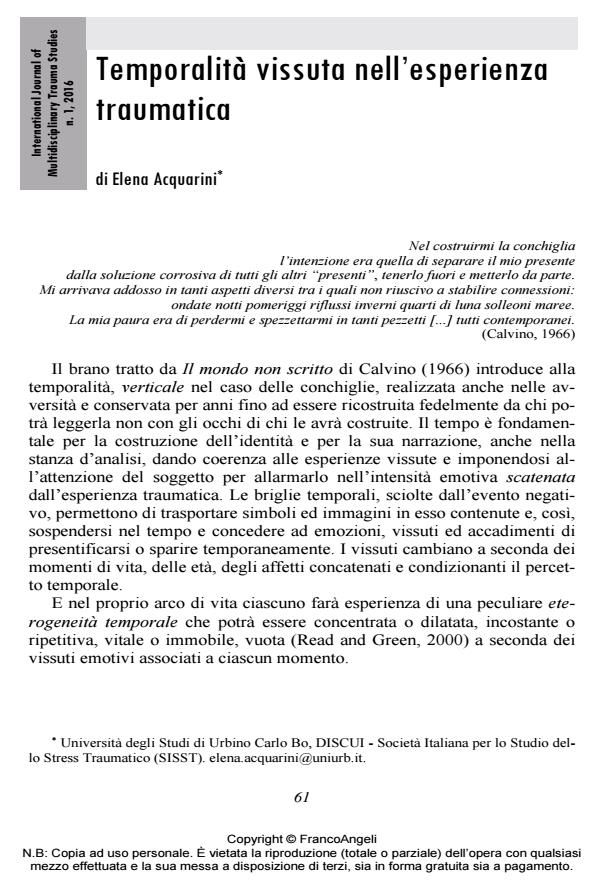The sense of time in traumatic experiences
Journal title INTERNATIONAL JOURNAL OF MULTIDISCIPLINARY TRAUMA STUDIES
Author/s Elena Acquarini
Publishing Year 2016 Issue 2016/1
Language Italian Pages 16 P. 61-76 File size 212 KB
DOI 10.3280/IJM2016-001007
DOI is like a bar code for intellectual property: to have more infomation
click here
Below, you can see the article first page
If you want to buy this article in PDF format, you can do it, following the instructions to buy download credits

FrancoAngeli is member of Publishers International Linking Association, Inc (PILA), a not-for-profit association which run the CrossRef service enabling links to and from online scholarly content.
A disease in timing perception reveals a structural or emotional distress which affects different areas of psychic functioning: disperception can be a sign of important events emotionally and physically not assimilated by the individual. In the case of traumatized identity, the experience of time reveals the emotional impairment, and the integration of this parameter in such complex picture left by a traumatic injury allows a better perspective of clinical understanding of trauma.
Keywords: Ttrauma, emotions, sense of time.
Elena Acquarini, Temporalità vissuta nell’esperienza traumatica in "INTERNATIONAL JOURNAL OF MULTIDISCIPLINARY TRAUMA STUDIES" 1/2016, pp 61-76, DOI: 10.3280/IJM2016-001007